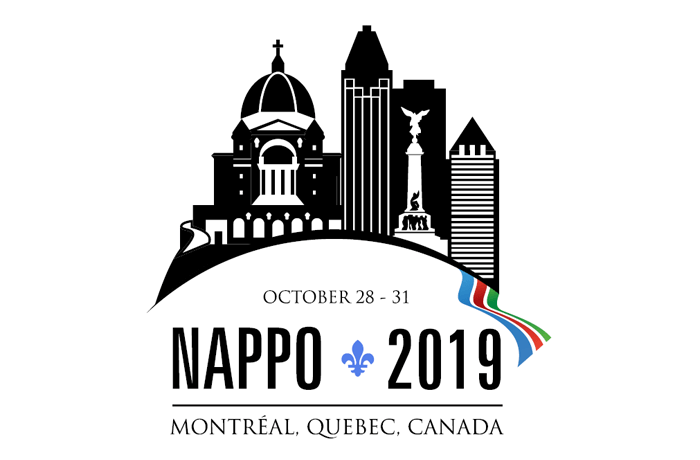Past Meetings
Go Back
SYMPOSIUM
EVALUATION OF NEXT STEPS FOR AN EXOTIC PEST ONCE ITS PRESENCE HAS BEEN CONFIRMED IN A NAPPO MEMBER COUNTRY
DESCRIPTION:
Once a new pest is detected, how do the National Plant Protection Organizations (NPPOs) in the NAPPO region make the decision as to whether they will regulate, eradicate, manage, or take no action on the pest?
BACKGROUND:
All NPPOs have the need to efficiently and consistently evaluate new pest detections in order to make regulatory decisions. Several International Standards for Phytosanitary Measures (ISPMs) have specific requirements on evaluating pest status (e.g., ISPMs 2, 5, 8, 11) that can influence the decision by NPPOs to regulate pests and take action on imported commodities.
Determining the appropriate response to a new pest is a complex process for NPPOs. When making that determination, NPPO’s need to consider economics, feasibility, and tools for eradication, availability of detection and identification tools and capacity to use these tools, as well as stakeholder interests.
The purpose of this symposium is to help NAPPO member countries understand the various internal processes and procedures when each NPPOs decides whether to eradicate, manage, or deregulate a newly detected pest. Recent country-specific programs can be used as examples - Plum Pox Virus, boll weevil, various species of fruit flies, citrus pests, emerald ash borer, cactus moth - where determinations made by each NPPO are based on various considerations and has led to different outcomes.
AUDIENCE INTEREST:
The topic relates directly to NAPPO’s Strategic Goal 5 – to Promote and maintain the scientific and technical basis of NAPPO plant protection activities and phytosanitary measures and also has its bases in several international plant health standards including ISPM 2 (Framework for pest risk analysis), ISPM 5 (Glossary of Phytosanitary Terms), ISPM 8 (Determination of pest status in an area), and ISPM 11 (Pest Risk Analysis for Quarantine Pests).
This symposium attempts to address the needs of NPPOs to balance budgets, consider economic and political impacts, as well as the state of the science when evaluating a new pest detection in previously non-infested areas. The expected interested audience will include policymakers, leaders of NPPOs, technical personnel, and various stakeholders (e.g. States, Provinces, and industry sectors).
Questions to be explored, among others, include: What data influences the type and level of response to a new pest? What are the challenges and possible outcomes after a pest evaluation is complete?
THURSDAY OCTOBER 31 |
|||
ID |
PRESENTATION |
PRESENTER |
FORMAT |
|---|---|---|---|
|
1 |
International and Regional Plant Health Standards relevant to the topic |
Zlotina, APHIS-PPQ |
|
SECTION 1: OVERARCHING APPROACHES BY NAPPO NPPOS |
|||
ID |
PRESENTATION |
PRESENTER |
FORMAT |
|---|---|---|---|
|
2 |
CFA |
Blair, CFIA |
|
|
3 |
SENASICA |
Santiago for Lopez, SENASICA |
|
|
4 |
APHIS PPQ |
Simon, APHIS-PPQ |
|
SECTION 2A: PEST RISK ANALYSIS / RISK ASSESSMENT PROCESS / ANALYSIS OF EMERGING PEST ISSUES |
|||
ID |
PRESENTATION |
PRESENTER |
FORMAT |
|---|---|---|---|
|
5 |
* How do NAPPO countries evaluate pests detected within their borders? * How do NPPOs deal with uncertainty in their risk assessment process? |
Dimitrova, CFIA |
|
|
6 |
Santiago for Lopez, SENASICA |
||
|
7 |
Meissner, APHIS-PPQ |
||
|
SECTION 2B: PEST RISK ANALYSIS / RISK MANAGEMENT DECISIONS AND RESPONSES |
|||
ID |
PRESENTATION |
PRESENTER |
FORMAT |
|---|---|---|---|
|
8 |
You found a pest, what now? How do NAPPO countries … * respond when a quarantine pest is confirmed within their borders? * establish / administer long-term programs to contain or slow the spread? mitigate pest risks long-term? * review (expand / reduce a regulated area? * make changes to regulatory programs and why? |
Vasudevan, Asbil |
|
|
9 |
Montealegre, |
||
|
10 |
Crowe, |
||
|
SECTION 3: COMMUNICATION WITH STAKEHOLDERS |
|||
ID |
PRESENTATION |
PRESENTER |
FORMAT |
|---|---|---|---|
|
11 |
A pest is not / cannot be eradicated - what do you do? * at what stage does engagement / communication with affected stakeholders (industry, provincial / state government, other departments) begin and how does this occur? * how are evaluation / assessment results communicated? |
McAllister, |
|
|
12 |
Montealegre |
||
|
13 |
Johnson, |
||
|
SECTION 4: COLLABORATION PANEL DISCUSSION (TO ADDRESS THE FOLLOWING TOPICS AND QUESTIONS) |
|||
ID |
PRESENTATION |
PRESENTER |
FORMAT |
|---|---|---|---|
|
14 |
* What is the international framework for pest reporting and how does it foster collaboration? * How does the NAPPO Phytosanitary Alert System fulfill this role? * How are trade implications and consequences of new pest detections considered and communicated? |
Bloem, |
|
|
15 |
Baez, |
||







